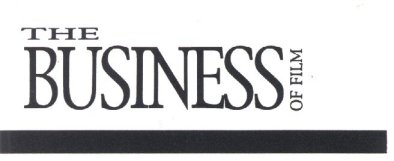|
MAY 1995 |
|
|
|
Content Wins Over Commerce
Published in the Special 1995 Special Finance Edition of Daily Variety, this article discusses how only a few years earlier, most films at Sundance did not find distributors. 1995 was the year of the Independent, with many Sundance type films gaining distribution before the festival even opened. |
|
Greg S. Bernstein |
The "experts" will tell you that you should stop making low-budget films and start making films for $10 million-plus, otherwise they won't have a shot at theatrical release, given the ever-diminishing number of exhibition and TV "slots," as theatrical and TV opportunities are called. The advice, though not wrong, isn't practical for the producer of the typical AFM offered film, which is usually budgeted on a much smaller scale.
So, what works in today's movie financing environment? Let's take three hypothetical of typical films offered at AFM:
Scenario 1: "Fight the Odds" The budget is $2 million to $5 million. It's an act ion-adventure genre pic starring perhaps one "A" name and a scattering of "B's" and "C's."
Scenario 2: "Low Bailer" The budget is under $ 1 million. This is an exploitation pic, perhaps a martial arts actioner or a revenge thriller starring a "B" name at best and populated more with "C's."
Scenario 3: "Artsy Drama" Budget is S3 million. This is a non-genre, "adult-oriented specialty film." You have several possibilities for the lead actors and director because the script is so good that top names are willing to do the film with a chunk of their usual salary deferred.
For "Fight the Odds," although domestic sales will probably only account for 35% of the budget, with the right male lead and lots of action, the picture could generate foreign pre-sales from the major European and Asian countries of 75% or more of the budget. The balance of the world will be just enough to pay the foreign sales agent his or her fee and expenses.
On the other hand, if the pic is produced at the low end of the budget scale, it probably won't have the star engine it needs to succeed. More than ever, the foreign marketplace needs star recognition to sell the limited video and television slots.
As for "Low Bailer," there is limited video shelf space and virtually no TV sales available for these films. While there is a small niche market in the $250,000 range, low-low-budget genre films with no names usually don't have a chance.
It may come as a shock to those who view the indie arena as the home of low-rent actioners, but "Artsy Drama" has a better shot at recouping than the similarly modest-budgeted genre pix.
A few years ago, most films at Sundance did not find distributors. Today, many have distributors before the festival even opens.
Today, every major studio has added a "classics" division, and they're in an acquiring mood. Also, international revenues and demand for "artsy" American product continues to expand, particularly for international television.
The recent decision by Fox/ Searchlight and France's UGC to co-produce films and cross-distribute each-other's films is an example of one company taking advantage of this phenomenon. Under the deal, UGC ends up with access to the American market for its films through Fox and distribution rights for Fox product in France. In addition to speculated distribution benefits in France over its existing operations, Fox gets co-financing on films that have enormous domestic potential if they hit, like "Four Weddings and a Funeral" and "Enchanted April," but on average have limited domestic results sufficient to justify the typical domestic investment in genre films.
But you don't have to be a studio behemoth like Fox to benefit from the current hunger for substantial fare. For "Artsy Drama," a presale of $300,000 in Germany would be reasonable. Given the non-genre nature of the film, Japan will not account for the usual 12% to 15% of the budget, in this case, only accounting for a meager $250,000. From the domestic territory, one could, given the best possible cast for our budget, only expect $1 million, if that. The rest of the world probably totals another $1 million. Thai's not enough to "make the film.
But with the addition of a star popular in America and Germany, so that the Germans now view the film as either a first-run German telefilm, or even better, German theatrical, you have a new opportunity. Next, try to find a way to produce the film in Germany so that the film now meets German content requirements. This confers a financial benefit on the German distributor. Given these enhancements, the German distributor may now be prepared to pay $900,000 or more for German rights. Moreover, given content qualification, the TV value in other Euro territories increases, from 10% to 100%.
These benefits do cost. The domestic territory drops to only 5750,000,25% of the budget.
The net effect is. however, now more than enough to make our film - $900,000 from Germany, $750,000 from domestic, $200,000 from Japan and at least S1.4 million from the rest of the world.
Quality is the bottom line in this scenario, and the reason so many producers will take what they think is the easy route and go with genre pictures. In reality, the risk is great with any option, which is why it's so tough to be an indie in the'90s.
Was it ever easy?
****
Reprinted with permission by The Business of Film
Law Offices of GREG S. BERNSTEIN, A Professional
Corporation
9601 Wilshire Boulevard, Suite 240, Beverly Hills,
California
90210-5288.
Phone: (310) 247-2790; Fax: (310) 247-2791; Internet: www.thefilmlaw.com
HOME |
ARTICLES
|

